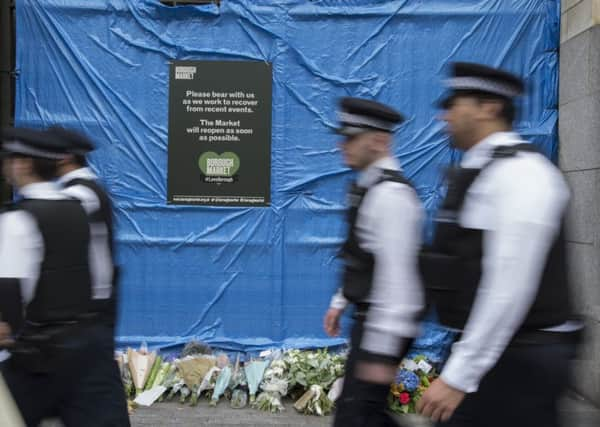Clive Walker: Prevent strategy faces battle for hearts and minds


Prevent exists at the ‘soft end’ of counter terrorism. It’s about ideas and values and not arrests and prosecution. But its acceptance and performance remain contested.
Who knows whether Salem Abedi or the London attackers could ever have been turned away from violent extremism? One important element of Prevent is Project Channel which provide support to individuals at risk of violent extremism. Legitimate questions should be asked about its application, operation, and extent in the face of a reported 23,000 subjects of interest.
Advertisement
Hide AdAdvertisement
Hide AdThe roots of Prevent go back to the aftermath of the 9/11 attacks and the need to respond to the allure of al-Qaida. The suicide bombings in London on 7/7 gave added momentum to Prevent which was formally launched in 2006. By then it was fully appreciated that the predominant threat arose from ‘neighbour terrorism’ – violent extremists who are not alien foreigners but are our neighbours.
Prevent sits alongside the three other strands of UK counter terrorism: to Pursue those responsible for terrorism, to Prepare for attacks, and to Protect and respond when they happen. However, these other elements have been honed over many decades and rely on specialist official personnel and expertise. They have not sought to engage the public or to enter political and cultural dialogues.
The theoretical development of Prevent is a sound element of counter-terrorism. Addressing the narratives of extremism should make it harder for extremists to sustain their arguments. Attempts to divert children and vulnerable persons away from violent extremism are no less legitimate than attempts to divert children from drug-taking or other harmful or self-abusive behaviour.
Yet, Prevent has faced significant challenges. It is based on uncertain theoretical foundations regarding the triggers and linkages of extremism, and violence. There is a lack of accountability or evidence to prove that it is effective.
Advertisement
Hide AdAdvertisement
Hide AdThe funding falls far behind policing and security activities. In practice, Prevent can be seen as uncertain, divisive, heavy-handed and secretive, especially by elements within those Muslim-heritage communities who feel they are the prime targets. Finally, Prevent seemed both to conflict with other important policies, especially community cohesion.
In the light of these difficulties, the Home Office sought to reformulate Prevent in 2011. There have been two consequences. The Prevent programme has been reined in to make it more distinct from community cohesion policies and to focus more on the risks of violent extremism. As a result, Prevent now points in two directions.
One aspect still deals with individuals identified as being at risk, with Project Channel still the prime response. Many people have been referred to this programme, with delivery of responses mainly from youth services, education, health or appointed counsellors. Those who are referred are offered ‘treatment’. But guidance about the triggers for referral is not matched by assurance as to whether the ‘treatment’ actually works.
The other direction pursued after 2011 is an emphasis on institutions where extremism might be propagated. Many such organisations are in the public sector, with education – schools, colleges and universities – at the forefront. Concern has been expressed as to whether these bodies are doing enough both to eradicate platforms for violent extremism and to provide appropriate instruction about it.
Advertisement
Hide AdAdvertisement
Hide AdAs well as public institutions, some private institutions have been given attention, with charities, mosques and madrassas becoming targets.
Both aspects of Prevent have been reinforced by the Counter Terrorism and Security Act 2015 which places a statutory duty on a wide range of public authorities to ‘have due regard to the need to prevent people from being drawn into terrorism’.
It is early days in the life of the 2015 legislation. The implications for Prevent in the private sector are even less crystallised around issues such as the roles of internet service providers. The Prime Minister has said ‘enough is enough’, but ‘victory’ over terrorism should not consist of placing individuals, communities and free expression under a cloud of perpetual suspicion.
The invention and re-invention of Prevent over the last 15 years are testaments to the challenges of winning hearts and minds. As recent attacks showed, not every heart will be won over. The harsh reality is that it is hard to compete in the market place of ideas against the simplistic slogans of jihadism. But we must invest confidence in the power of own ideologies of liberty, equality and fraternity. So far as Prevent achieves that goal, it remains worthwhile.
Clive Walker is Professor of Criminal Justice Studies at the University of Leeds and special adviser to the Home Office on terrorism issues.